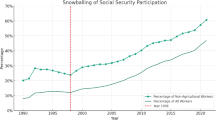Conclusions
What do the two cases have in common and what sets them apart? Both have in common a high degree of administrative incompetence and mismanagement. The preceding analysis shows this clearly in the Chinese case. In the Soviet case, the issue of incompetence can be formulated as follows: Given the decision to extract rural resources for the sake of industrialization, how could the damage to agriculture and peasant morale be minimized? Stalinist planners could have learned lessons from some of their predecessors, who had similar problems, such as the Bolsheviks of 1918–1920 or Count Witte of the Russia of the 1890s, who also harshly squeezed the peasantry on behalf of industrialization. Stalinist officials, however, plunged into the tasks of collectivization and grain procurement without giving much thought to procedures that might secure minimal peasant subsistence and hence keep alienation within bounds. The result was to set in motion a cycle of repression and concessions that culminated in the 1932–33 famine.
Administrative incompetence in the Soviet Union was linked to the fundamental stance of the state toward the peasants, which was one of war. The state viewed its relations with the peasants as a zero-sum conflict - “it's them or us,” as one Central Committee member reportedly put it.Footnote 1 The state adopted a scarcely disguised view of peasants as enemies.Footnote 2 This conflictual posture was the basis for Stalin's determination to force the peasants unconditionally to subordinate their interests to those of the state. Even if top leaders did not make an explicit decision to inflict famine upon peasants, they were prepared to pay this price. The catastrophe of 1932–33 was thus an extreme manifestation of the conflictual state-peasant relationship that characterized the entire Stalin era: “For a good quarter of a century, extracting grain from the peasants amounted to a permanent state of warfare against them and was understood as such by both sides.”Footnote 3
In the Chinese case there is simply no evidence that the state regarded peasants in this light, Mao's acknowledgment of interest conflicts notwithstanding. There is no evidence that GLF procurements were viewed as a weapon of war or of punishment, designed to force peasants into submission to state goals. What then was the state's stance toward the peasants during the GLF? It was to harness the peasantry to unprecedentedly ambitious developmental goals, goals shaped by Mao's new ideological conceptions. In the process of implementing them, the state's domination of the peasantry reached new heights, thereby bringing China closer to Stalinist reality. As in Stalin's case, GLF policy called for increased extraction of resources from the peasants, not just for national but also for local purposes. But this was based on the assumption that a breakthrough had occurred in agricultural production, a belief, in other words, that increased extraction was compatible with peasant welfare. This assumption turned out to be erroneous; it was part and parcel of the extraordinary mismanagement of the GLF. Famine was an unanticipated outcome of this mismanagement, an outcome for which Mao Zedong and his associates are responsible.
When Chinese leaders finally realized what was going on in late 1960 they retreated from the policies of the Great Leap Forward. In the years that followed, procurement continued to be an important issue of conflict between the state and the peasants, but both the extent of extraction and the conflict fell significantly short of the Stalinist case.Footnote 4 To the extent that in relation to the peasants Stalinism amounted to the intentionally extreme exploitation of the peasants, to that extent the Stalinist label is not fully appropriate even for the Great Leap Forward, nor for the rest of the Maoist era.
Similar content being viewed by others
Notes
Viktor Kravchenko, Chose Freedom (New York: Scribners, 1946), 91. The author was an official sent to the rural areas during this period.
See, for example, the Kaganovich speech cited in note 44, with its emphasis on “kulak psychology” among the collective farm peasants, (20).
Lewin “Taking Grain,” 282.
See Oi, “State and Peasant in Contemporary China.” Yang and Li report that since 1962, the purchases have remained stable or “became a little lower” but that because of population increase, rations remained low, leading to “semi-starvation” in some areas. See “Agriculture, Light Industry and Heavy Industry”: 207.
Author information
Authors and Affiliations
Rights and permissions
About this article
Cite this article
Bernstein, T.P. Stalinism, famine, and Chinese peasants. Theor Soc 13, 339–377 (1984). https://doi.org/10.1007/BF00213230
Issue Date:
DOI: https://doi.org/10.1007/BF00213230




